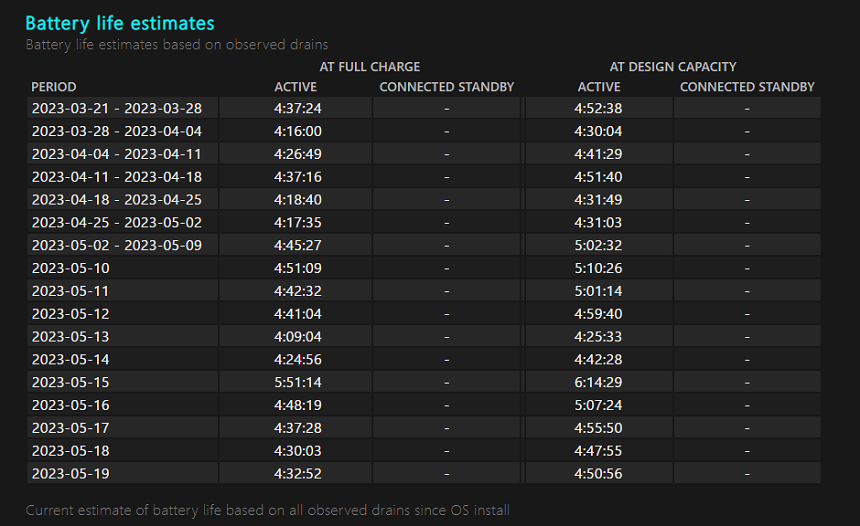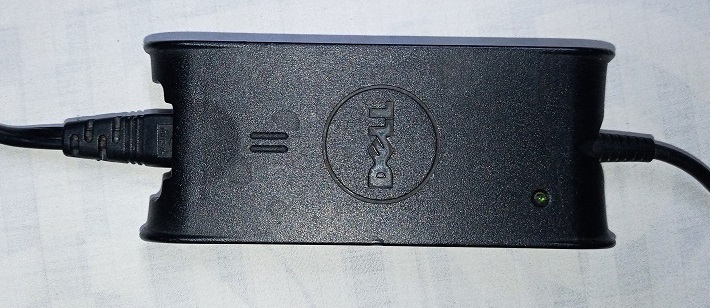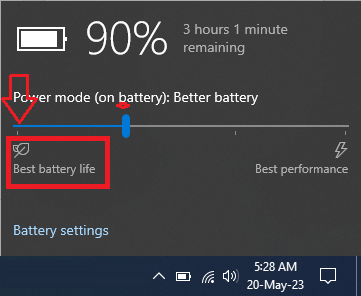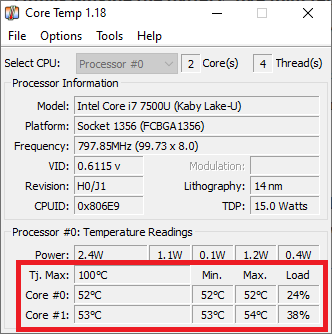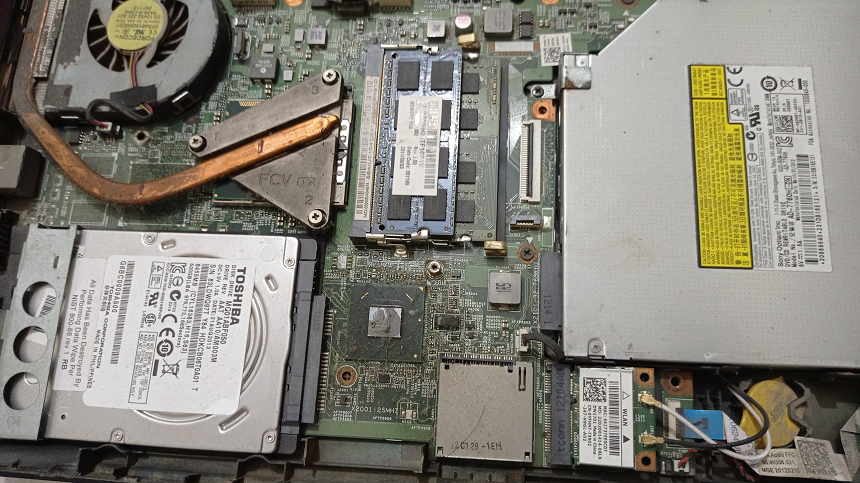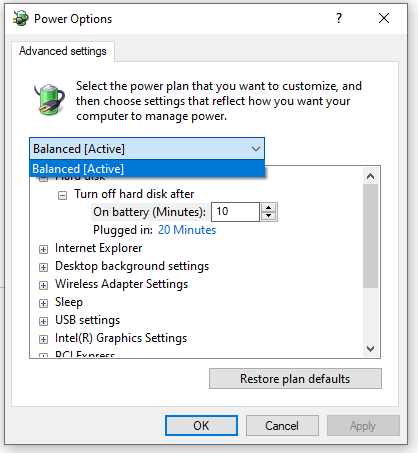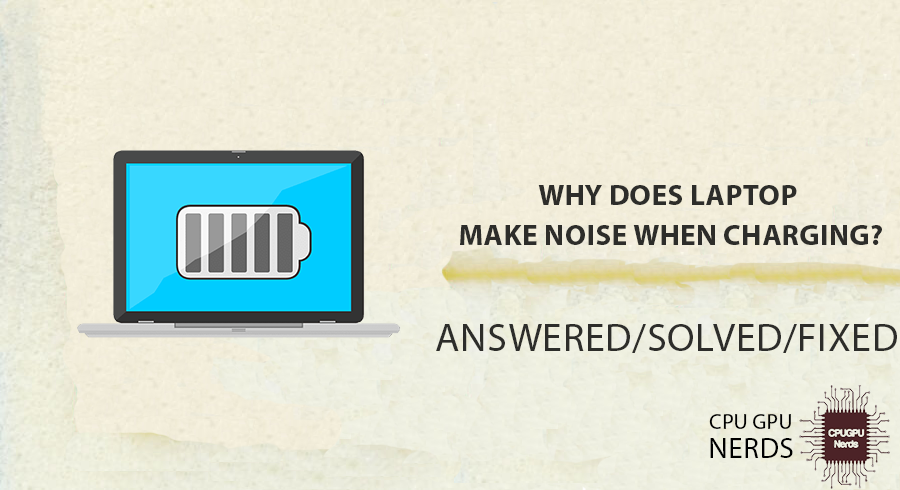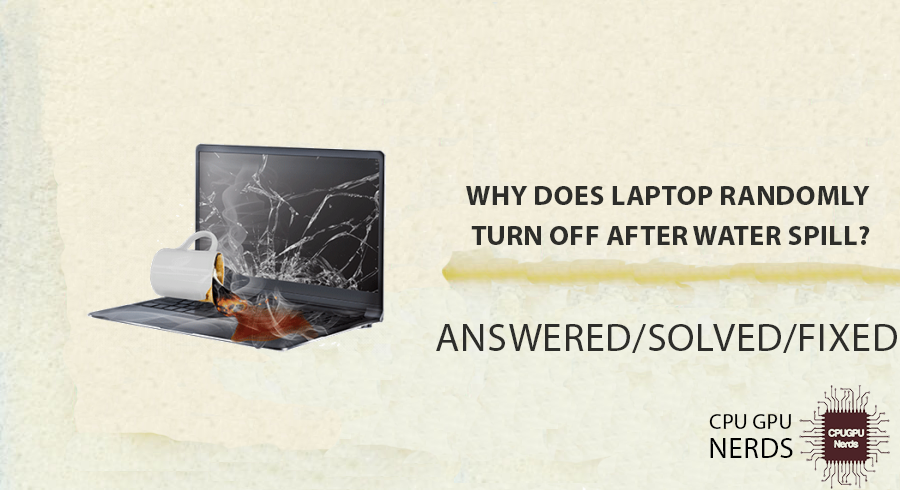Laptops are becoming essential in today’s world due to their portability.
Are you frustrated that your laptop’s battery is no longer charging to its full capacity? This common issue occurs when a laptop’s battery ceases charging at a certain percentage, typically well below 100 percent.
Understanding why this occurs is crucial for extending the life of your laptop battery and ensuring that it functions optimally. This article explores the factors that can prevent your laptop’s battery from reaching maximum capacity and provides practical solutions to this problem.
Why Is Laptop Battery Not Charging To 100%?
It is because of wear and tear of batteries, low battery health, unnecessary background processes, faulty charger, misconfigured power management settings, high temperature and low airflow, battery and hardware failure, short circuits in hardware, overloaded external devices, and outdated drivers.
2. Battery Health and Calibration
3. Background Processes and Power Use
4. Faulty Charging System or Charger
7. Battery or Hardware Failure
8. Short Circuit In Charging Pin
9. Overloaded External Devices
10. Outdated or Misconfigured Battery Drivers
Age and Wear on Batteries
Over time, PC batteries naturally wear out and age. One result of this method is that it makes it harder to keep a rate. Because of this, the battery can no longer be charged to 100%. Most of the time, this power loss happens slowly and worsens as the battery ages.
Battery Health and Calibration
A microcontroller is used to ensure the charging and discharging processes work correctly in laptop batteries. But sometimes, the microcontroller’s code or how the battery’s internal calibration works can go wrong.
It can lead to a wrong estimate of the battery’s maximum capacity, keeping the laptop from charging. Most likely, this can be fixed by recalibrating the battery or estimating its health from the battery report.
- How To Fix It?
You need to keep an eye on battery health, and when you see any fluctuation, use preventive measures. You can check the battery report to check its health. Press the Windows key, type “Command Prompt,” then choose the Command Prompt app from the quest effects.
Now type “powercfg /batteryreport” and press enter. The order will make a document about the battery and save it in a certain place on your computer. Most of the time, the paper is kept in the Windows drive.
The command will show the course where the document is kept. Copy that document link, paste it into Explorer, and hit enter. It will show you the report. If the report shows bad battery health, replace it immediately to prevent other component damage.
Background Processes and Power Use
Power-hungry programs or processes running in the background can sometimes use more power than the charger can provide. This difference between how much energy is taken in and how much is given out can keep the battery from fully charging. This problem might be fixed by closing unused apps or lowering the laptop’s power settings.
- How To Fix It?
Close the background processes to save the battery. To do that, press “Alt+Ctrl+Del” and open “Task Manager.” Once in the Task Manager, go to the “Processes” tab, select the unnecessary background processes, and press “End Task” to close them. It will save a lot of battery power.
Faulty Charging System or Charger
Charging problems can be caused by a faulty charging device, such as the charger itself or the charging port on the PC. If the charger is broken or not giving off enough power, the battery might not charge.
In the same way, a laptop’s charging system can be messed up by a broken charging port. In these situations, it’s checking the charger’s capacity and looking at the charging port for any physical damage or dust buildup is important.
- How To Fix It?
If your charger or charging system is faulty, then you have to change the charger or charging system completely. There is no solution except changing the battery or charger.
Power Management Settings
The options for a laptop’s power management, such as those in the operating system or BIOS, can affect how the battery charges. Some power-saving modes or choices for optimizing the battery could stop it from charging to make it last longer.
Changing these settings to allow full charging can fix the problem but may hurt the battery’s health in the long run.
- How To Fix It?
Change the power management system settings of your battery. To do that, double-click the battery icon on the Windows taskbar and then scroll the battery settings to “Best battery life.” It will disable excessive thing-consuming batteries, and you can charge the battery up to 100%.
External Factors
Things outside the battery, like high temperatures, can affect how well it can be charged. High temperatures can cause the battery to wear out faster, which makes it less useful overall.
In the same way, very low temperatures can make it hard to charge. Ensuring the laptop works within the recommended temperature range can help it maintain its best charge performance.
- How To Fix It?
Make sure your laptop has enough airflow and cooling. If vents are blocked or jammed, heat can build up, which can worsen the battery’s temperature. Clean the vents often, and don’t use your laptop on soft surfaces like beds or chairs, which can block the flow of air.
Battery or Hardware Failure
A laptop battery that won’t charge to 100% can sometimes be a sign that either the battery or the hardware is failing. If the battery is broken or getting close to the end of its life, it might not be able to reach its full potential.
Also, problems with the laptop’s hardware, like a broken energy management system, could be to blame. In these cases, you might need help from a professional or a new charger.
- How To Fix It?
If your battery or any other hardware is completely failed, then there is no option than removing it and replacing it with a new one.
Short Circuit In Charging Pin
When two or more parts of an electrical circuit accidentally touch each other, the energy flow is interrupted. It is called a “short circuit.” A short circuit in a laptop’s charging pin can stop the laptop from charging properly.
The short circuit could also keep the battery from getting the power or cutting-edge it needs to run at full speed. So, the battery level may also reach a standstill at a lower percentage, even though the charging system seems to be working normally.
- How To Fix It?
You can use a ground wire to avoid short circuits and keep your laptop grounded while charging. Moreover, you can seek professional help to detect the short circuit.
Overloaded External Devices
Overloaded external devices use a lot of power and are linked to the laptop as peripherals or accessories. These devices use power from the laptop’s battery, which could change how the battery charges.
When too many external devices are connected to a laptop, they drain the battery faster than the charger can charge it back up. So, the charging process can’t keep up with how much power is being used, so the battery charges slowly or doesn’t reach its full capacity of 100%.
- How To Fix It?
Remove all the external peripheral devices while charging your laptop. It will save on extra charging, and you can fully charge your battery.
Outdated or Misconfigured Battery Drivers
Drivers for batteries play a crucial role in managing the charging process and optimizing battery performance. As operating systems and firmware are updated, obsolete battery drivers may become incompatible with the new software. This incompatibility can lead to improper battery charging and prevent it from reaching full capacity.
Incorrect configurations or settings within the battery driver can occasionally interfere with charging. These improper configurations can prevent the battery from being fully charged. It will be due to a user inadvertently modifying settings or malfunction while driving force installation or replacement.
- How To Fix It?
Laptop batteries do have drivers to control their settings. If there is any driver update from the manufacturers, then you have to install it. Your battery is showing the wrong figures; charging might be due to this fact.
Does 100% Charge A Laptop Battery Damage It?
Contrary to common opinion, modern laptops have built-in safety features that keep them from being overcharged. These systems always show the battery’s charge level and stop the charging process when the battery is fully charged. Thus, plugging in your laptop at 100% won’t damage the battery.
Even though it’s not hard to overcharge, exposing the battery to too much power all the time could hurt it. Keeping your computer’s battery at 100% for a long time can put more stress on the cells, making the battery age faster.
How Can I Maximize My Laptop’s Battery Life?
You can use power saving mode, low or moderate brightness, remove unnecessary external devices, or use an appropriate power plan to minimize your laptop’s battery life. Optimizing the battery settings helps you minimize your laptop battery’s stress. It extends the lifespan of your battery.
Activate Power Saving Mode
Most laptops are equipped with a power-saving mode that optimizes power consumption. Activate this mode when performing tasks that do not necessitate high overall performance settings. It will assist you in striking a balance between performance and battery life, ensuring that every ounce of power is utilized effectively.
Adjust Brightness
The program is one of the most significant power clients, so adjust the screen’s brightness accordingly. Reducing the screen’s luminance can significantly extend your computer’s battery life. Experiment with locating the lowest luminance level that is still comfortable while working. Consider allowing adaptive luminance settings that adjust automatically based on ambient lighting conditions.
Remove Extra External Devices
USB devices, external hard drives, and other peripherals draw power from your computer. Unplug them if you’re not actively using them. Doing so frees up power for the essentials and reduces unnecessary battery depletion.
Select the Appropriate Power Plan
Frequently, operational structures offer various energy plans, such as “Balanced,” “Power Saver,” and “High Performance.” Experiment with these options to determine which meets your needs. The energy-saving plan restricts machine resources, thereby extending battery life, whereas the high-performance plan prioritizes speed at the expense of energy consumption.
Conclusion
There are numerous reasons why a computer battery might not charge to 100%. Age and wear on batteries, battery fitness, and calibration issues, historical methods and power use, faulty charging pins or chargers, power management settings, external elements such as temperature, battery or hardware failure, charging pin short circuits, overloaded external devices, and outdated or incorrectly configured battery drivers can all contribute to this issue.
Although it is a common belief that fully charging a computer battery can damage it, modern laptops are equipped with protection features that prevent overcharging. However, constantly keeping the battery at 100% can place greater stress on the cells and hasten their degeneration.
Utilizing energy-saving modes, adjusting the screen’s luminance, reducing the number of external devices, selecting an appropriate power plan, and engaging in proper charging practices will maximize the computer’s battery life.
By understanding the causes of incomplete laptop battery charge and implementing the suggested solutions, users can extend the general lifespan of their computer batteries and ensure the most dependable overall performance. Remember to seek professional advice or, if necessary, replace the battery or charger, especially in hardware or battery failure cases.

Hey, I’m Hammad. I write for this website to help you with the IT advice about PC, RAM, CPU, Motherboard, PSU, and other PC components.
I will provide detailed guides with images, and explain step by step so you can understand the process. Check all my articles here.


